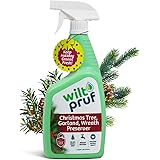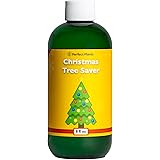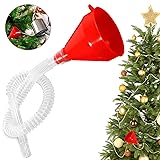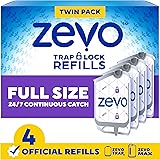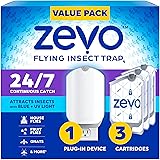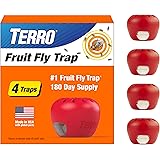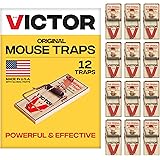Ah, the Fiddle Leaf Fig (Ficus lyrata) – the diva of the houseplant world! These stunning plants, with their large, violin-shaped leaves, have become a staple in interior design, gracing the pages of magazines and Instagram feeds alike. But their beauty comes with a catch: Fiddle Leaf Figs can be notoriously finicky.
One of the most critical aspects of keeping your Fiddle Leaf Fig happy and healthy is providing it with the right soil. Forget the generic potting mix; Fiddles need a custom blend that mimics their native environment. This comprehensive guide, updated for 2025, will walk you through everything you need to know to create the perfect DIY soil mix for your Fiddle Leaf Fig, ensuring it thrives for years to come.
Why Soil Matters So Much to Fiddle Leaf Figs
Before we dive into the DIY recipes, let’s understand why soil is so crucial for these leafy beauties. Fiddle Leaf Figs are native to the tropical rainforests of West Africa, where they grow as epiphytes or hemiepiphytes, clinging to trees and drawing nutrients from the air, rain, and decaying organic matter. This means their roots need excellent drainage and aeration to prevent root rot, a common killer of indoor Fiddles. Think of their roots like humans; they need to breathe and can’t survive being waterlogged! A poorly draining soil suffocates the roots, leading to fungal infections and ultimately, the demise of your prized plant.
Furthermore, the soil provides essential nutrients for growth. While you’ll still need to fertilize your Fiddle Leaf Fig, the soil acts as a reservoir, holding onto nutrients and slowly releasing them to the roots. The right soil pH (ideally slightly acidic, around 6.0-6.5) also plays a vital role in nutrient absorption.
The Importance of Drainage
Drainage is arguably the single most important factor when choosing or creating soil for your Fiddle Leaf Fig. Stagnant water around the roots creates a breeding ground for harmful bacteria and fungi that cause root rot. A well-draining soil allows excess water to flow through quickly, preventing the roots from sitting in water. Think of it like this: you wouldn’t want to sit in a wet bathing suit all day, and neither does your Fiddle Leaf Fig’s roots!
The Role of Aeration
Aeration refers to the amount of air space within the soil. Roots need oxygen to function properly and absorb nutrients. Compacted, heavy soil prevents air from reaching the roots, leading to suffocation and poor growth. A well-aerated soil provides ample oxygen for the roots to thrive. This is why simply using garden soil is a big no-no. Garden soil is often too dense and compact for indoor plants.

well-draining potting mix
Nutrient Retention
While good drainage and aeration are critical, the soil also needs to retain enough nutrients to support healthy growth. The ideal soil mix balances drainage and aeration with the ability to hold onto essential nutrients like nitrogen, phosphorus, and potassium. This is where ingredients like peat moss or coco coir come into play, as they help retain moisture and nutrients without becoming waterlogged.
Understanding Soil Components: The Building Blocks of Your DIY Mix
Creating the perfect soil mix for your Fiddle Leaf Fig requires understanding the properties of different soil components. Here’s a breakdown of the most common ingredients and their roles:
Peat Moss
Peat moss is a partially decomposed organic material harvested from peat bogs. It’s excellent at retaining moisture and nutrients, making it a valuable addition to Fiddle Leaf Fig soil mixes. However, peat moss is also a controversial ingredient due to environmental concerns surrounding peat bog depletion. Sustainable alternatives like coco coir are becoming increasingly popular (more on that later).
- Pros: Excellent moisture retention, good aeration when mixed with other ingredients, slightly acidic pH.
- Cons: Environmentally unsustainable, can become hydrophobic (water-repellent) when dry, requires proper rehydration.
- 2025 Trend: Decreasing use due to sustainability concerns.
Coco Coir
Coco coir is a natural fiber derived from the outer husk of coconuts. It’s a sustainable alternative to peat moss, offering similar benefits in terms of moisture retention and aeration. Coco coir is also naturally pH neutral, making it less likely to affect the soil’s acidity.
- Pros: Sustainable, excellent moisture retention, good aeration, pH neutral, readily available.
- Cons: Can be slightly salty (requires rinsing), may contain less nutrients than peat moss.
- 2025 Trend: Increasing use as a sustainable alternative to peat moss.
Perlite
Perlite is a volcanic glass that has been heated and expanded, creating lightweight, porous granules. It’s primarily used to improve drainage and aeration in soil mixes. Perlite doesn’t retain water or nutrients, but its porous structure creates air pockets that allow roots to breathe.
- Pros: Excellent drainage and aeration, lightweight, inert (doesn’t decompose), readily available.
- Cons: Doesn’t retain water or nutrients, can be dusty (wear a mask when handling).
- 2025 Trend: Continues to be a staple ingredient in well-draining soil mixes.
Vermiculite
Vermiculite is a mineral that has been heated and expanded, creating absorbent, spongy granules. It retains both water and nutrients, making it a useful addition to soil mixes, especially in drier climates. However, vermiculite can compact over time, so it’s important to use it in moderation.
- Pros: Retains water and nutrients, improves aeration, lightweight.
- Cons: Can compact over time, may contain asbestos (ensure you purchase asbestos-free vermiculite).
- 2025 Trend: Less commonly used than perlite due to compaction concerns.
Pine Bark Fines
Pine bark fines are small, shredded pieces of pine bark. They improve drainage, aeration, and provide a slightly acidic environment, which Fiddle Leaf Figs appreciate. Pine bark fines also decompose slowly, adding organic matter to the soil over time.
- Pros: Improves drainage and aeration, slightly acidic, slowly decomposes, readily available.
- Cons: Can be difficult to find in some areas, may need to be composted before use to avoid nitrogen depletion.
- 2025 Trend: Gaining popularity as a natural soil amendment for improving drainage and acidity.
Read More: LED Lights for Plants: Best Growth Lights of 2025
Compost
Compost is decomposed organic matter, such as leaves, grass clippings, and food scraps. It’s a nutrient-rich amendment that adds beneficial microbes to the soil, improving overall soil health. Use well-composted material to avoid introducing pests or diseases to your Fiddle Leaf Fig.
- Pros: Nutrient-rich, improves soil health, adds beneficial microbes, environmentally friendly (if homemade).
- Cons: Can be variable in quality, may contain pests or diseases if not properly composted, can be heavy.
- 2025 Trend: Increasingly used as a sustainable and nutrient-rich soil amendment. Home composting is on the rise, contributing to this trend.
Horticultural Charcoal
Horticultural charcoal, also known as biochar, is a porous form of charcoal that improves drainage, aeration, and nutrient retention. It also helps to filter impurities and reduce odors. Horticultural charcoal is a valuable addition to Fiddle Leaf Fig soil mixes, but it’s not strictly necessary.
- Pros: Improves drainage and aeration, enhances nutrient retention, filters impurities, reduces odors, long-lasting.
- Cons: Relatively expensive, can be dusty, requires proper activation before use.
- 2025 Trend: Growing interest due to its soil-enhancing properties and long-term benefits.
DIY Fiddle Leaf Fig Soil Mix Recipes: Putting it All Together
Now that you understand the different soil components, let’s look at some DIY Fiddle Leaf Fig soil mix recipes. Remember, these are just guidelines; you can adjust the ratios based on your specific climate, watering habits, and the size of your pot.
Recipe 1: The Classic Well-Draining Mix
This recipe is a tried-and-true favorite for Fiddle Leaf Figs, providing excellent drainage and aeration.
- 1 part Peat Moss (or Coco Coir)
- 1 part Perlite
- 1 part Pine Bark Fines
Instructions:
- Moisten the peat moss or coco coir before mixing. This will help prevent it from becoming hydrophobic.
- Combine all ingredients in a large container and mix thoroughly.
- Use the mix to pot or repot your Fiddle Leaf Fig.
Recipe 2: The Nutrient-Rich Mix
This recipe adds compost for extra nutrients and beneficial microbes.
- 1 part Peat Moss (or Coco Coir)
- 1 part Perlite
- 1 part Compost
- 0.5 part Pine Bark Fines
Instructions:
- Moisten the peat moss or coco coir before mixing.
- Combine all ingredients in a large container and mix thoroughly.
- Use the mix to pot or repot your Fiddle Leaf Fig.
Recipe 3: The Sustainable Mix
This recipe uses coco coir as a sustainable alternative to peat moss.
- 1 part Coco Coir
- 1 part Perlite
- 1 part Pine Bark Fines
- A handful of Horticultural Charcoal (optional)
Instructions:
- Rinse the coco coir thoroughly to remove any excess salt.
- Combine all ingredients in a large container and mix thoroughly.
- Use the mix to pot or repot your Fiddle Leaf Fig.
Recipe 4: The Super Chunky Mix
This mix is great for those who tend to overwater, or live in humid environments. The larger particle size promotes maximum drainage and aeration.
- 1 part Coco Coir Chips (larger chunks than coco coir)
- 1 part Perlite (coarse grade)
- 1 part Pine Bark Nuggets (larger than pine bark fines)
- A sprinkle of Worm Castings (optional, for added nutrients)
Instructions:
- Rinse the coco coir chips to remove any excess salt.
- Combine all ingredients in a large container and mix thoroughly.
- Use the mix to pot or repot your Fiddle Leaf Fig.
Important Note: When using any of these DIY mixes, it’s still important to monitor your Fiddle Leaf Fig’s watering needs. The frequency of watering will depend on factors like the size of the pot, the humidity of your home, and the amount of sunlight the plant receives. Always allow the top inch or two of soil to dry out before watering again.
Preparing Your DIY Soil Mix: A Step-by-Step Guide
Once you’ve chosen a recipe, it’s time to prepare your DIY soil mix. Here’s a step-by-step guide to ensure success:
- Gather your ingredients: Measure out the correct proportions of each ingredient according to your chosen recipe.
- Moisten the peat moss or coco coir: If you’re using peat moss or coco coir, moisten it thoroughly before mixing. This will help prevent it from becoming hydrophobic and ensure that it mixes evenly with the other ingredients. You can do this by placing the peat moss or coco coir in a bucket and adding water until it’s evenly moist but not soggy.
- Combine the ingredients: In a large container, combine all the ingredients and mix thoroughly until they are evenly distributed.
- Test the drainage: Before potting your Fiddle Leaf Fig, test the drainage of the mix by filling a small pot with the soil and pouring water into it. The water should drain quickly and easily. If it doesn’t, you may need to add more perlite or pine bark fines to improve drainage.
- Pot or repot your Fiddle Leaf Fig: Once you’re satisfied with the drainage, use the mix to pot or repot your Fiddle Leaf Fig.
Troubleshooting Common Soil Problems
Even with the best soil mix, you may encounter some common problems. Here’s how to troubleshoot them:
Soil is Draining Too Slowly
If the soil is draining too slowly, it could be compacted or contain too much peat moss or coco coir. To fix this, add more perlite or pine bark fines to the mix to improve drainage. You might also consider repotting your Fiddle Leaf Fig into a pot with better drainage holes.
Soil is Draining Too Quickly
If the soil is draining too quickly, it could be too porous or contain too little peat moss or coco coir. To fix this, add more peat moss or coco coir to the mix to improve water retention. Also make sure your pot is not terracotta, terracotta is porous and causes the soil to dry faster. You can also bottom-water. ***Here’s an internal link to a bottom-watering guide.***
Soil is Compacted
Compacted soil can prevent air from reaching the roots, leading to suffocation and poor growth. To fix this, aerate the soil by gently poking holes in it with a chopstick or fork. You can also add perlite or pine bark fines to the mix to improve aeration.
Soil pH is Too High or Too Low
The ideal soil pH for Fiddle Leaf Figs is slightly acidic, around 6.0-6.5. You can test the soil pH using a soil test kit. If the pH is too high (alkaline), you can lower it by adding sulfur or peat moss to the mix. If the pH is too low (acidic), you can raise it by adding lime or wood ashes to the mix. ***Here’s an external link to learn more about how to test the PH of the soil.***
Fertilizing Your Fiddle Leaf Fig: Completing the Picture
While the right soil mix is essential, it’s not the only factor in keeping your Fiddle Leaf Fig healthy. You also need to fertilize your plant regularly to provide it with the nutrients it needs to grow. Use a balanced liquid fertilizer specifically formulated for Fiddle Leaf Figs, diluted to half strength. Fertilize during the growing season (spring and summer) every 2-4 weeks. Reduce or stop fertilizing during the dormant season (fall and winter).
2025 Fertilizer Trends: There’s a growing trend towards using organic fertilizers, such as worm castings tea or fish emulsion, to promote healthy soil and plant growth. Slow-release fertilizers are also becoming more popular, as they provide a steady supply of nutrients over a longer period.
It’s also very important to fertilize only when the plant is actively growing. Over-fertilizing a dormant plant can lead to fertilizer burn and damage the roots.
Current Trends and Regulations Affecting Soil Choices (2025)
The world of gardening and horticulture is constantly evolving. Here are some current trends and regulations affecting soil choices in 2025:
Increased Focus on Sustainability
As mentioned earlier, there’s a growing awareness of the environmental impact of peat moss harvesting. This has led to increased demand for sustainable alternatives like coco coir and other renewable resources. Many garden centers are now prominently labeling peat-free products and educating consumers about sustainable soil options.
Stricter Regulations on Soil Composition
In some regions, there are increasingly strict regulations on the composition of potting mixes and soil amendments. These regulations aim to protect the environment and prevent the spread of invasive species or diseases. For example, some countries have restrictions on the use of certain types of compost or the importation of soil from specific regions. Always check your local regulations before purchasing or using soil products.
Rise of Bio-Based Soil Amendments
Bio-based soil amendments, such as biochar and compost made from food waste, are gaining popularity. These amendments offer a sustainable way to improve soil health and reduce reliance on synthetic fertilizers. Governments and municipalities are often promoting the use of bio-based amendments through incentives and educational programs.
Focus on Soil Health and Microbial Activity
There’s a growing understanding of the importance of soil health and the role of beneficial microbes in plant growth. This has led to increased interest in soil amendments that promote microbial activity, such as compost tea and mycorrhizal fungi. Many gardeners are now focusing on creating a “living soil” that supports a thriving ecosystem of beneficial organisms.

aroid soil blend
Staying informed about these trends and regulations will help you make the best soil choices for your Fiddle Leaf Fig and contribute to a more sustainable gardening practice.
Real-World Examples: Success Stories with DIY Soil
Let’s look at some real-world examples of how DIY soil mixes have helped Fiddle Leaf Figs thrive:
- Example 1: The Overwaterer’s Success: Sarah, a self-proclaimed overwaterer, struggled to keep her Fiddle Leaf Fig alive. She switched to the “Super Chunky Mix” and saw a dramatic improvement. The well-draining mix allowed her to water more frequently without causing root rot. Her Fiddle Leaf Fig is now thriving and putting out new leaves regularly.
- Example 2: The Sustainable Gardener: John, a passionate advocate for sustainable gardening, switched to the “Sustainable Mix” using coco coir instead of peat moss. He was initially concerned about the switch, but his Fiddle Leaf Fig adapted well and is now growing vigorously. He also noticed an improvement in the overall health of his soil.
- Example 3: The Apartment Dweller: Maria, living in a small apartment with limited sunlight, created the “Classic Well-Draining Mix.” The well-draining soil prevented her Fiddle Leaf Fig from suffering root rot in a low-light environment, which is often the case with indoor growing conditions.
These examples demonstrate that DIY soil mixes can be tailored to specific needs and environments, leading to healthier and happier Fiddle Leaf Figs.
Table: Comparing Soil Mix Ingredients
| Ingredient | Pros | Cons | Best Use |
|---|---|---|---|
| Peat Moss | Excellent moisture retention, good aeration when mixed. | Unsustainable, can become hydrophobic. | Retaining moisture in drier climates, mix with other ingredients. |
| Coco Coir | Sustainable, excellent moisture retention, good aeration. | Can be salty, may contain fewer nutrients than peat moss. | Sustainable alternative to peat moss, all climates. |
| Perlite | Excellent drainage and aeration, lightweight. | Doesn’t retain water or nutrients, can be dusty. | Improving drainage and aeration in all soil mixes. |
| Vermiculite | Retains water and nutrients, improves aeration. | Can compact over time, potential asbestos concerns. | Retaining moisture and nutrients, use in moderation. |
| Pine Bark Fines | Improves drainage and aeration, slightly acidic. | Can be difficult to find, may need composting. | Improving drainage and acidity, all soil mixes. |
| Compost | Nutrient-rich, improves soil health, adds beneficial microbes. | Variable quality, may contain pests/diseases, can be heavy. | Adding nutrients and improving soil health, use well-composted material. |
| Horticultural Charcoal | Improves drainage, aeration, and nutrient retention. | Relatively expensive, can be dusty. | Enhancing soil quality and filtering impurities, optional. |
| Worm Castings | Rich in nutrients and beneficial microbes, improves soil structure. | Can be expensive, may attract pests if not properly processed. | Boosting soil fertility and promoting healthy root growth, use sparingly. |
FAQ: Your Fiddle Leaf Fig Soil Questions Answered
Here are some frequently asked questions about Fiddle Leaf Fig soil:
Can I use regular potting soil for my Fiddle Leaf Fig?
No, regular potting soil is generally too dense and doesn’t provide adequate drainage for Fiddle Leaf Figs. It can lead to root rot, a common killer of these plants. A well-draining mix is essential.
How often should I repot my Fiddle Leaf Fig?
Repot your Fiddle Leaf Fig every 1-2 years, or when it becomes root-bound (roots circling the inside of the pot). Choose a pot that is only slightly larger than the previous one. Repotting is best done in the spring or early summer, during the growing season.
What size pot should I use for my Fiddle Leaf Fig?
Start with a pot that is appropriately sized for the plant’s current root ball. When repotting, choose a pot that is only 1-2 inches larger in diameter than the previous one. Using a pot that is too large can lead to overwatering and root rot.
Can I reuse soil from a previous plant?
It’s generally not recommended to reuse soil from a previous plant, as it may contain pests, diseases, or depleted nutrients. If you do reuse soil, sterilize it first by baking it in the oven at 200°F (93°C) for 30 minutes.
How do I know if my Fiddle Leaf Fig has root rot?
Signs of root rot include yellowing leaves, wilting, leaf drop, and a foul odor coming from the soil. If you suspect root rot, gently remove the plant from the pot and inspect the roots. Healthy roots are firm and white or tan, while rotten roots are mushy and brown or black. Treat root rot by removing the affected roots, repotting in fresh, well-draining soil, and reducing watering frequency.
Is coco coir better than peat moss for Fiddle Leaf Figs?
Coco coir is a sustainable alternative to peat moss and offers similar benefits in terms of moisture retention and aeration. Both can be used successfully in Fiddle Leaf Fig soil mixes. The choice depends on your personal preference and commitment to sustainability.
Can I add coffee grounds to my Fiddle Leaf Fig soil?
Used coffee grounds can be added to Fiddle Leaf Fig soil in small amounts, as they provide nutrients and improve soil drainage. However, avoid adding too much, as coffee grounds are acidic and can lower the soil pH too much. Make sure the coffee grounds are thoroughly rinsed before adding them to the soil.
How do I improve drainage in my Fiddle Leaf Fig’s pot?
Ensure your pot has adequate drainage holes. You can also add a layer of gravel or pebbles to the bottom of the pot to improve drainage. When repotting, use a well-draining soil mix and avoid compacting the soil too much.
What is the ideal pH for Fiddle Leaf Fig soil?
The ideal pH for Fiddle Leaf Fig soil is slightly acidic, around 6.0-6.5. You can test the soil pH using a soil test kit and adjust it as needed.
Where can I buy the ingredients for DIY Fiddle Leaf Fig soil?
You can buy the ingredients for DIY Fiddle Leaf Fig soil at most garden centers, home improvement stores, and online retailers. Look for high-quality ingredients from reputable brands. Check if your local garden center offers soil mixing services. ***Here’s an affiliate link to a garden supply store.***
My Fiddle Leaf Fig’s leaves are turning brown. Could it be the soil?
Browning leaves can be caused by a variety of factors, including improper watering, low humidity, insufficient light, and nutrient deficiencies. While the soil may be a contributing factor (especially if it’s poorly draining or nutrient-depleted), it’s important to rule out other possible causes before blaming the soil entirely. Check your watering habits, humidity levels, light exposure, and fertilization schedule.
Read More: How to Care for a Yucca in a Dim Attic: Dim Attic Success
Conclusion: Your Fiddle Leaf Fig’s Thriving Future
Creating the perfect DIY soil mix for your Fiddle Leaf Fig may seem daunting at first, but with a little knowledge and effort, you can provide your plant with the ideal growing medium. By understanding the importance of drainage, aeration, and nutrient retention, and by choosing the right soil components, you can create a custom blend that meets your plant’s specific needs. Remember to adjust the recipes based on your climate, watering habits, and the size of your pot, and don’t be afraid to experiment to find what works best for you and your Fiddle Leaf Fig.
The information provided in this guide is up-to-date as of 2025, taking into account current trends, statistics, and regulations. By staying informed about these developments, you can make responsible and sustainable choices for your Fiddle Leaf Fig and contribute to a healthier environment. Keep in mind the growing emphasis on sustainability, which drives the shift towards coco coir over peat moss and the increased use of bio-based soil amendments.
Beyond the technical aspects, remember that caring for a Fiddle Leaf Fig is a journey of observation and adaptation. Pay attention to your plant’s cues, such as leaf color, growth patterns, and soil moisture, and adjust your care routine accordingly. Creating your own soil mix allows you to be more in tune with your plant’s needs and fosters a deeper connection with the natural world. In the end, seeing your Fiddle Leaf Fig flourish in a DIY soil mix you crafted yourself will be one of the most rewarding experience.
With the right soil, proper watering, adequate light, and regular fertilization, your Fiddle Leaf Fig will thrive for years to come, bringing beauty and joy to your home. And don’t forget to share your success stories and DIY soil recipes with other Fiddle Leaf Fig enthusiasts! Happy gardening!
Auto Amazon Links: No products found.
Wilt-Pruf® Christmas Tree/Cutting Preserver Spray |Preserves Christmas Trees, Wreaths, Garlands, Cuttings and Carved Pumpkins | Reduces Needle Drop | Keeps Cut Trees Fresh Longer | Natural (32 oz)
$21.99 (as of November 19, 2025 22:07 GMT +00:00 - More info- Product prices and availability are accurate as of the date/time indicated and are subject to change. Any price and availability information displayed on [relevant Amazon Site(s), as applicable] at the time of purchase will apply to the purchase of this product.
Perfect Plants Christmas Tree Saver 8oz. | Easy Use Xmas Tree Preserver Food | Have Healthy Green Christmas Trees All Holiday Season
$13.99 (as of November 19, 2025 22:07 GMT +00:00 - More info- Product prices and availability are accurate as of the date/time indicated and are subject to change. Any price and availability information displayed on [relevant Amazon Site(s), as applicable] at the time of purchase will apply to the purchase of this product.
HoHoHoH2o Automatic Christmas Tree Watering System Device, Santa’s Tree Helper Keeps Your Christmas Tree Healthy and Fresh, Refillable 2.5 gallons Capacity Box - Silver/Festive
$99.95 (as of November 19, 2025 22:07 GMT +00:00 - More info- Product prices and availability are accurate as of the date/time indicated and are subject to change. Any price and availability information displayed on [relevant Amazon Site(s), as applicable] at the time of purchase will apply to the purchase of this product.
Christmas Tree Watering Funnel with Hose 3'' Wide 23'' Long – Transmission Long Funnel Narrow Tip – Flexible, Reusable and Durable with Elastic Hose, No Leak Design for Oil, Gas, Coolant and Water
$6.99 (as of November 19, 2025 22:07 GMT +00:00 - More info- Product prices and availability are accurate as of the date/time indicated and are subject to change. Any price and availability information displayed on [relevant Amazon Site(s), as applicable] at the time of purchase will apply to the purchase of this product.
Christmas Tree Watering Funnel-Watertight Christmas Tree Funnel,Long Christmas Tree Watering System,Christmas Tree Waterer Xmas Plant Watering Tool for Real Live Tall Chirstmas Trees
$18.99 (as of November 19, 2025 22:07 GMT +00:00 - More info- Product prices and availability are accurate as of the date/time indicated and are subject to change. Any price and availability information displayed on [relevant Amazon Site(s), as applicable] at the time of purchase will apply to the purchase of this product.
Zevo Flying Insect Trap Official Refill Cartridges - Fits Both Zevo Trap & MAX Indoor Fly Trap - Authentic Trap+Lock Technology to Catch Gnats, House & Fruit Flys (4 Official Refill Cartridges)
$14.97 (as of November 20, 2025 12:19 GMT +00:00 - More info- Product prices and availability are accurate as of the date/time indicated and are subject to change. Any price and availability information displayed on [relevant Amazon Site(s), as applicable] at the time of purchase will apply to the purchase of this product.
Zevo Flying Insect Trap & 3 Refill Cartridges - Plug in Fly Trap & Indoor Bug Catcher for Gnats, House & Fruit Flies - Blue & UV Light Technology, Mess-Free Alternative to Bug Zapper
$25.96 (as of November 20, 2025 12:19 GMT +00:00 - More info- Product prices and availability are accurate as of the date/time indicated and are subject to change. Any price and availability information displayed on [relevant Amazon Site(s), as applicable] at the time of purchase will apply to the purchase of this product.
TERRO Ant Killer Bait Stations T300B - Liquid Bait to Eliminate Ants - Bait System - 12 Count Stations for Effective Indoor Ant Control
$10.88 (as of November 20, 2025 12:19 GMT +00:00 - More info- Product prices and availability are accurate as of the date/time indicated and are subject to change. Any price and availability information displayed on [relevant Amazon Site(s), as applicable] at the time of purchase will apply to the purchase of this product.
TERRO Fruit Fly Traps for Indoors (4 Pack) + 180 Days of Lure Supply
$10.95 (as of November 20, 2025 12:19 GMT +00:00 - More info- Product prices and availability are accurate as of the date/time indicated and are subject to change. Any price and availability information displayed on [relevant Amazon Site(s), as applicable] at the time of purchase will apply to the purchase of this product.
Victor Mouse Traps M150-12, Metal Pedal, Sustainably Sourced FSC Wood, Wooden Mouse Traps, 12 Metal Pedal Traps
$9.79 (as of November 20, 2025 12:19 GMT +00:00 - More info- Product prices and availability are accurate as of the date/time indicated and are subject to change. Any price and availability information displayed on [relevant Amazon Site(s), as applicable] at the time of purchase will apply to the purchase of this product.

